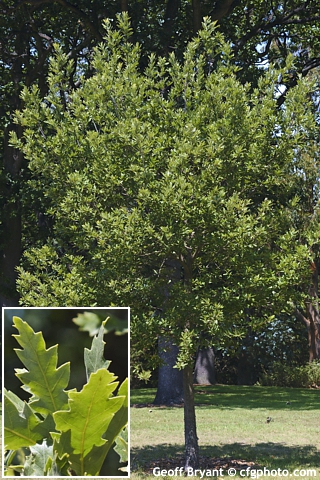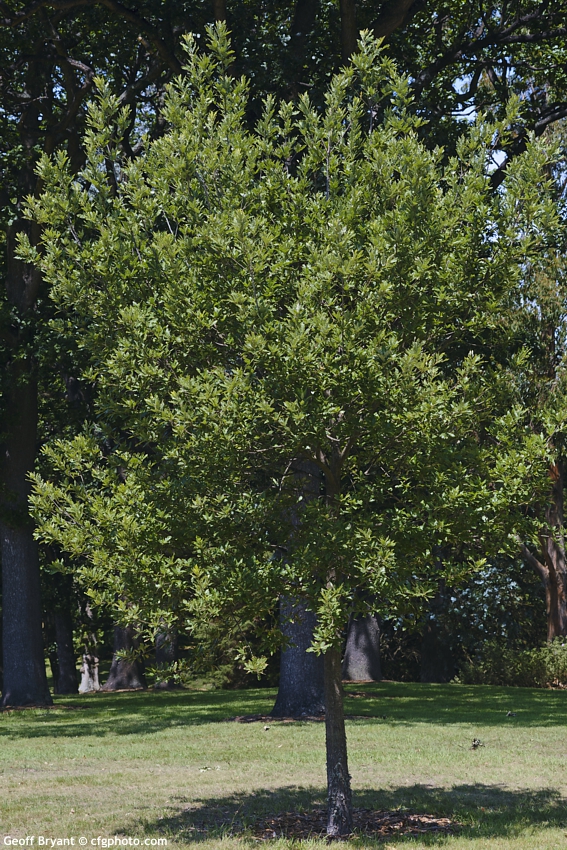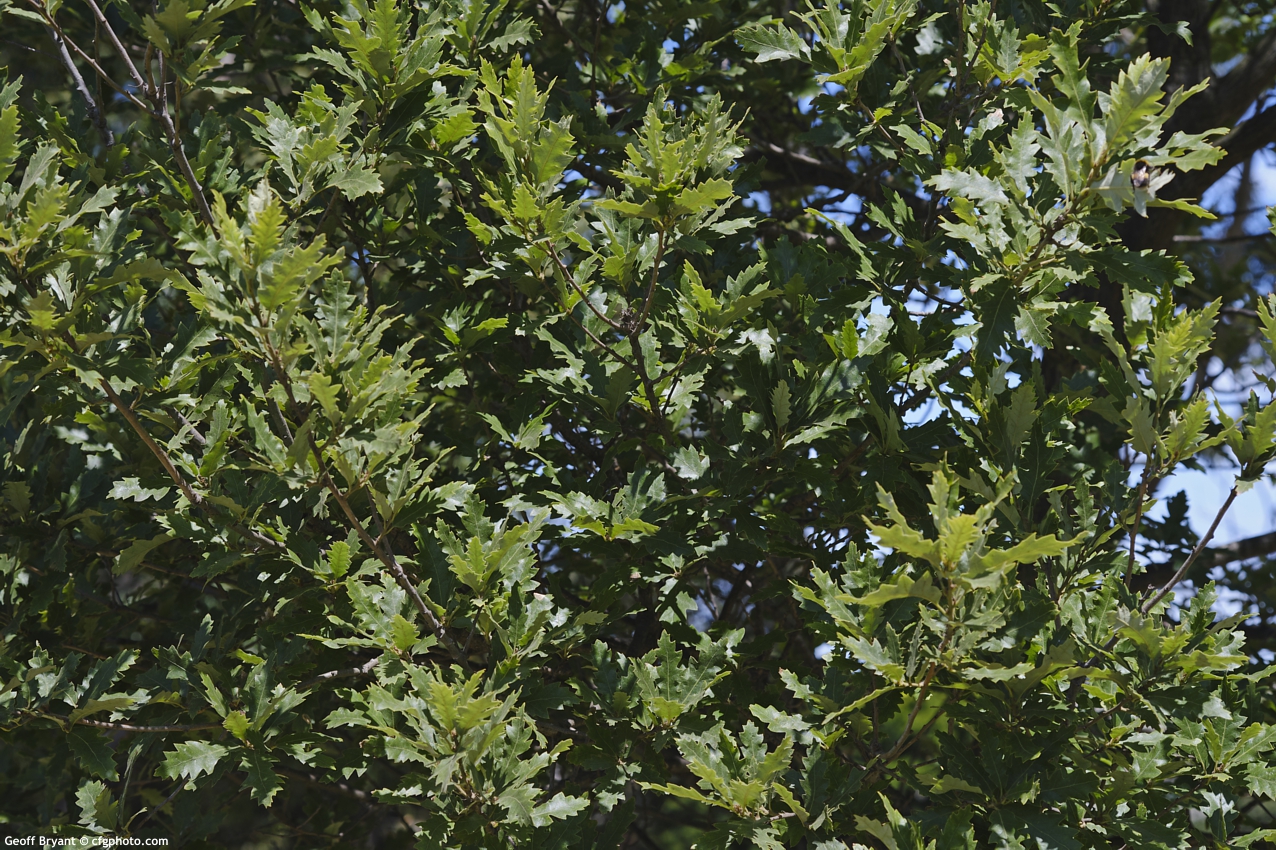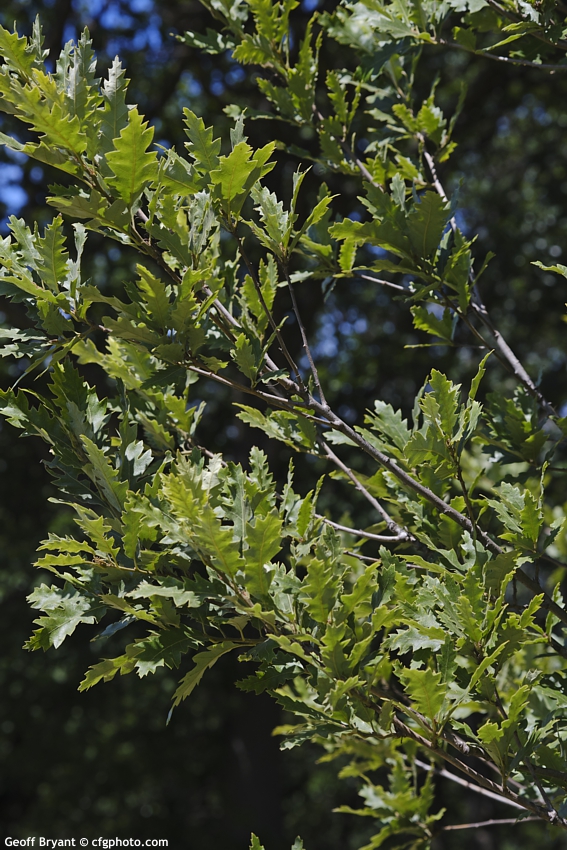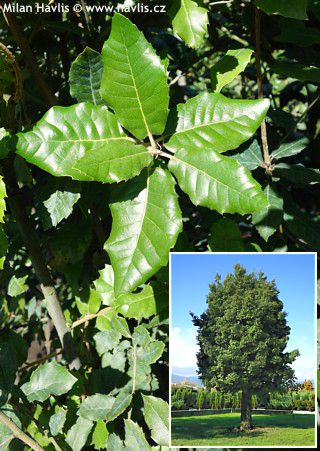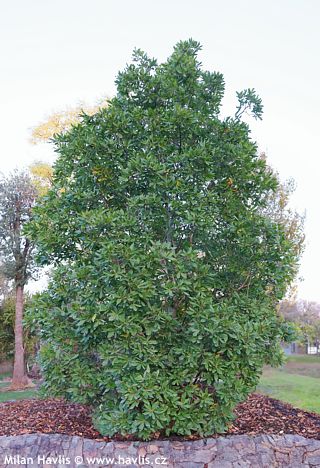Quercus x hispanica 'WAASLAND' Spanish oak
Quercus
Spanish oak is a natural hybrid of two completely different species, inconsistent in both type and location: deciduous Turkish oak (q. cerris - Turkey and the Balkans) and evergreen cork oak (q. suber - especially the Pyrenees to the northernmost edge of Africa). Despite these differences, it is a natural hybrid that must have originated in Europe before the middle of the 18th century, because in 1783 the significant French naturalist Jean-Baptiste Lamarck (1744-1829) mentions in his encyclopaedia 3 specimens growing in the Paris Royal Garden in Trianon.
Reliably evergreen or at least semi-deciduous oaks are, of course, sought-after trees, but it is necessary to consider their hardiness abilities. Cork oak is considered so exotic that Czech botanists never paid much attention to it and immediately labelled it unreliable. However, we experienced the opposite when our tree in a large pot withstood the frost of -17 ° C without any protection and continued to grow in the spring. So if this hybrid has only partial genetic equipment of this species and the rest will behave like a Turkish oak, which is completely reliable in our country, the chances are great. This is confirmed by an unexpected finding not too far from us, in the Arboretum Mlyňany in Slovakia, as early as in 1909. At that time, the manager noticed that his workers had twigs with green oak leaves in their hats in the middle of winter work. He began searching for the miracle and managed to locate the tree. He reported it to the owner of the arboretum, Count Ambróza-Migazzi, whose motto was Semper vireo (Always Green). The tree was named Ambrozyana variety and is said to grow there to this day.
Waasland is a variety of hybrid Spanish oak and the name of a Belgian region where it was found. It features elongated leaves with irregular lobes, which resemble oak leaves more than most other varieties. They are very stiff, leathery, shiny, dark green, the underside is protected by silvery grey indumentum that protects them from drying winds. Young leaves are silvery all around and the twigs are light orange-brown. During normal winters, they are evergreen, only during long-lasting frosts and frozen soil they can fall off, but in spring they are replaced with new ones. In late summer mature small acorns.
It grows upright, relatively fast (about 30-50 cm per year), forming a nice and dense, spherical crown. You can make an attractive medium-tall tree or a tall shrub out of it which will serve a decent specimen in any garden, a year-round screen against unwanted views from the windows of surrounding houses to your garden, or a nice companion of other evergreen trees with differently coloured of shaped foliage.
Spanish oak will be satisfied with almost any well-drained soil because standing water at the roots would cause diseases and eventual death. However, evenly moist ground after planting will allow it to establish well, but watering is no longer necessary in subsequent years. It copes with chalky soil, too. It likes a lot of sun and heat, so it is not advisable to plant it in the borderline of its hardiness of zone 6 and in exposed locations (hilltop, large plains, etc.). For cultivation in Central European conditions, it is necessary to select and plant only pieces with mature wood, which will no longer be damaged by frost. Pruning is possible in spring. Hardy to approx. -23 ° C and further trials continue.
Last update 08-11-2021
Goods are shipped all over Europe. For Russia and U.K. and for further details please read about SHIPPING OPTIONS HERE.
Are you interested in a serious discount for orders NOV-FEB? Check your options here.
THE PRICES INCLUDE VAT of 15%. For quick conversion you can use 1 CZK = approx. 0.04 EUR
- STANDARD QUALITY - Plants of this group are 1st class quality with number of branches and overall density adequate to their size and age, considering they were container grown.
- DE LUXE QUALITY - This label guarantees a luxurious quality of manually selected plants that, compared to their height and age, are exceptionally dense and beautiful.
- EXTRA - These plants are usually mature and bigger specimens with exceptional overall appearance.
- STANDARD (as described in the plant form) means a tree with a trunk of 190-210 cm and a crown at the top, unless specified differently. The commercial size for trees is their girth measured in the height of 1m from ground.
- HOBBY - These plants are of the same quality as our standard-quality plants but younger and therefore cheaper.
- SHRUB - a woody plant with branches growing bushy from the ground level.
- HALF-STANDARD or MINI-STANDARD - a small tree with shorter trunk, its size is usually specified.
- FEATHERED - These are trees with branches growing already from the base of the trunk and up along the stem.
- GRASSES and PERENNIALS - Sizes given usually read the diameter of the pot or the clump, as specified.

































